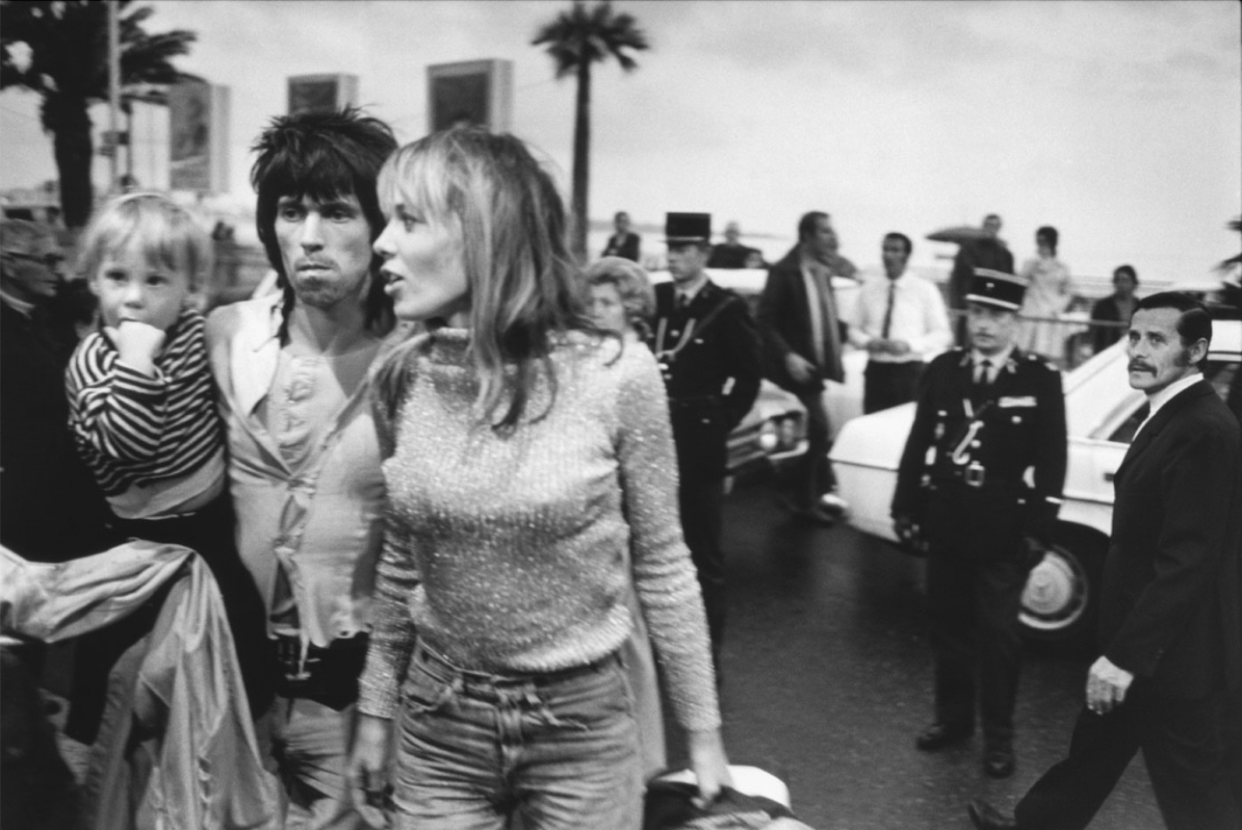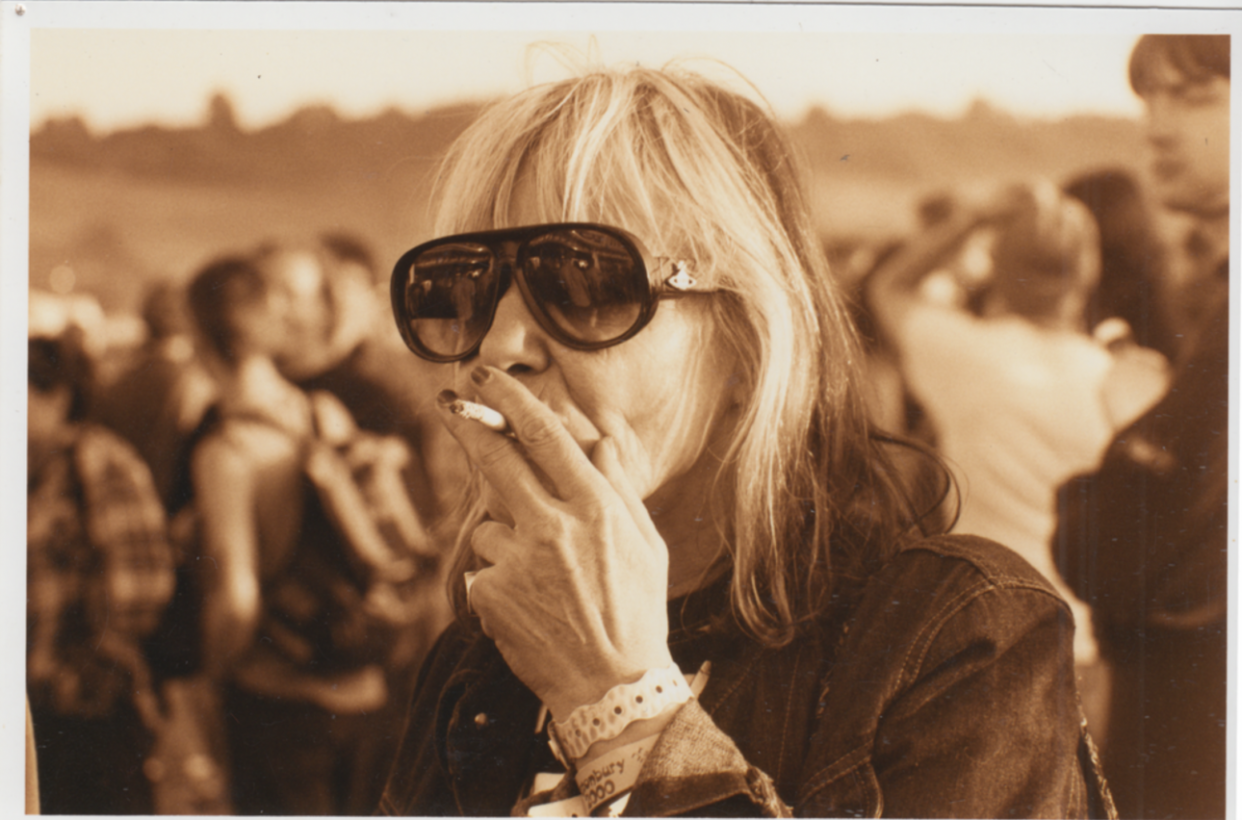Rolling Stones Muse Anita Pallenberg ‘Was a Real Tornado, Didn’t Give Two Fucks’


More from Spin:
Rolling Stones, Foo Fighters, Neil Young Anchor New Orleans Jazz Fest
The Rolling Stones Reveal 2024 North American Stadium Tour Dates
Anita Pallenberg is the personification of the saying, “Behind every man is an even greater woman.” The Italian-born German actor was muse to three different members of the Rolling Stones, influencing their style and sound. She started with Brian Jones, with whom she had a violent relationship, then Keith Richards—with whom she had a long-term relationship and three children: Marlon, Angela and Tara—and Mick Jagger, her co-star in Performance with whom she denies having sexual relations, but it’s all there on tape. The vivacious and magnetic Pallenberg died in 2017 at the age of 75. She left behind a partially completed memoir, Black Magic, yards of Super 8mm footage, stacks of photographs and a lasting impression on everyone who encountered her.
This narrative-rich material is the source for the documentary, Catching Fire: The Story of Anita Pallenberg. The film is the idea of Marlon Richards and is directed by Alexis Bloom (Bright Lights Starring Carrie Fisher and Debbie Reynolds) and Svetlana Zill (In Restless Dreams: The Music of Paul Simon). Catching Fire also has the voices of Marianne Faithfull and Sandy Lieberman, as well as Pallenberg’s surviving children. Scarlett Johansson’s voiceover reads from Pallenberg’s manuscript without emotion, letting the words carry the message.

There is little need for extra voices as Catching Fire has a wealth of up-close footage of Pallenberg’s life captured on film. The videographers are, presumably, members of the Rolling Stones. The insight the film provides, into not just Pallenberg’s life, but that of the perennial group, is previously unseen. As such, it’s not only fun and games that are part of Catching Fire, but also Pallenberg’s challenges being amidst complicated musicians. She turned to heroin to deal with her circumstances. One scene shows an endless train of people trooping into Pallenberg’s and Richards’ home in France, Villa Nellcôte, where the latter decided to record Exile on Main St. One can understand why Pallenberg turned to hard drugs.
It’s the children underfoot while adults are out of control that are the most jarring moments of Catching Fire. Actor Jake Weber, whose father was the drug supplier, shares his experience as one of the children at Nellcôte. Weber asks Pallenberg for some cocaine, not knowing what it is, and she gives him a bit. This is not rock bottom for either of them, but it is one of the key downturn points for Pallenberg who unravels further and further with increasingly bad decisions.
Catching Fire spotlights what was charismatic and irresistible about Pallenberg in equal measure with her very human flaws, making her that much more compelling in the process. Bloom and Zill share their experiences making the film—as well as the juicy parts they had to leave out, including Richards’ kleptomaniac tendencies and escaping testicles.
Where was the treasure trove of source material?
ALEXIS BLOOM: Marlon found pages of Anita’s manuscript when she died. It’s not a complete manuscript. It’s various chapters and different runs at things with different people, sometimes with herself, making notes, diary entries. It’s a whole mixture of things, her attempting to tell her own life story. He wasn’t aware that she was writing anything about her life. It was a great revelation to him. That, combined with the Super 8mm that he had, he always had a sense that his mum needed a place in the sun. She was a really genuinely interesting person in her own right. He said to us, “Everyone’s always obsessed with my dad, but my mum was the really interesting one.” Not to put Keith down. Keith’s interesting too, but he’s written about plenty. She was her own eccentric and idiosyncratic person and [Marlon] loved her, so it came from him.
How come there was so much video footage of every moment of Anita’s life?
SVETLANA ZILL: It’s a bunch of young, 20-something kids traveling around the world, doing drugs, having sex, living this crazy lifestyle. It’s very much in the spirit of them experiencing this life. They’re home movies. There’s no handler or videographer capturing these moments because we know they’ll be important or they’ll be packaged in some way. They literally had two Super 8 cameras that they were passing back and forth.
Bloom: Technology was quite new. They didn’t know what they were doing. They didn’t develop the film for ages. They were just playing. Scenes of Anita and Keith in bed, that must have been Mick filming them, because he was on holiday with them. If you were a rock ‘n roller and you were all traveling together, you’d be like, “Keith and Anita in bed together, here we go.” There was stuff we couldn’t use, some escaping testicles and things like that.

What was your first reaction to seeing the footage?
Zill: We knew it was a treasure. It was very exciting. The first time I watched that footage, my mind was blown, but it also was a bit nauseating because it’s very shaky and very handheld. They don’t hold shots for very long and everything is underexposed or overexposed. It’s very raw. In filmmaking in general, especially when working with archival material, you only get to watch something for the first time once. It felt like you’re in the room with them or you’re on the mountain with them. It felt very special and unique and very much informed the style and approach that we took to making the film is really leading with that experience and being in the moment and also of course, pairing that with her words about those times. It just felt like it was a snapshot and a portal into that world rather than reflecting back on it.
What was Keith Richards’ response when you approached him about participating in the film? From his input, it sounds like he put his everything into it.
Zill: I think so. It took a long time though. It was a “no” for a while, or “Maybe, we’ll see,” and a long silence. We just went on making the film. Over time, and knowing that we were working with Marlon and Angela, and that we were speaking to people who are very close to her, he came around. It took a while for him to agree to do it, but once he did, he was very present and very generous and so open. There was a vulnerability and the love is clearly so palpable between them, both in her writing and also the way that he speaks about her. They were very, very close until the end of her life. They were real friends with a deep love and respect for one another. We felt that in the room speaking with him.
The film provides an insight to the Rolling Stones through Anita that previously hasn’t been revealed.
Bloom: She was so different from the other Rolling Stones’ wives as well. She fell out with Bianca Jagger. [Anita] was a kleptomaniac. Keith was a klepto. She “borrowed” or took Bianca Jagger’s outfit and then returned it to her full of semen. Honestly, the film is mild. The DVD extra would be NC-17. People talk about all this stuff she did. Bill Wyman didn’t like her at all because she borrowed [of his wife’s] something without permission. She was a real tornado, didn’t give two fucks.
Zill: People stole from them all the time too. People were thirsting after fame in that way so their stuff was always getting stolen.
It seems bizarre that Marlon was removed from Anita’s care only to be given to Keith.
Bloom: I asked [Marlon], “Where did you go?” He went, “Paris,” and I said, “So you went to school in Paris?” He said, “No, I didn’t go to school.” I was like, “Oh, you did therapy or talk to somebody about what happened?” He was like, “No. I moved in with my father and his girlfriend at the time.” There were five people living in a tiny one-bedroom apartment, and the toilet didn’t work. They used to go across to the [Four Seasons Hotel] George V and use the toilet in the hotel. Neither of them were brilliant parents, but they both loved the kids a lot. They’re very loving people. Keith still is. Everyone says he’s an incredibly loving father. I think that goes a long way to helping children forgive you.
Zill: That was informative for us and instructive in making the film, to lean into that bittersweetness. There’s a lot of darkness, but there’s also a lot of love and tenderness. We embraced both of those while making the film.
The film is balanced in giving Anita the credit she deserves, but also talking about her unraveling and her questionable decisions. It’s a very realistic portrait of her.
Zill: Marlon grew up very quickly and was an adult as a young child in many ways. He recognizes the complexity of both of his parents, especially his mother and was very generous in bringing us on board. He gave us access to this incredible material, but then very much said, “Go on your way and make the film.” He encouraged us to have that nuance. To embrace her complexity and the tragedy and the difficulty as much as the fun, thrilling, adventures that took place. That level of trust is what allowed us to make the film that is more of a nuanced portrait of a real person.
To see our running list of the top 100 greatest rock stars of all time, click here.
